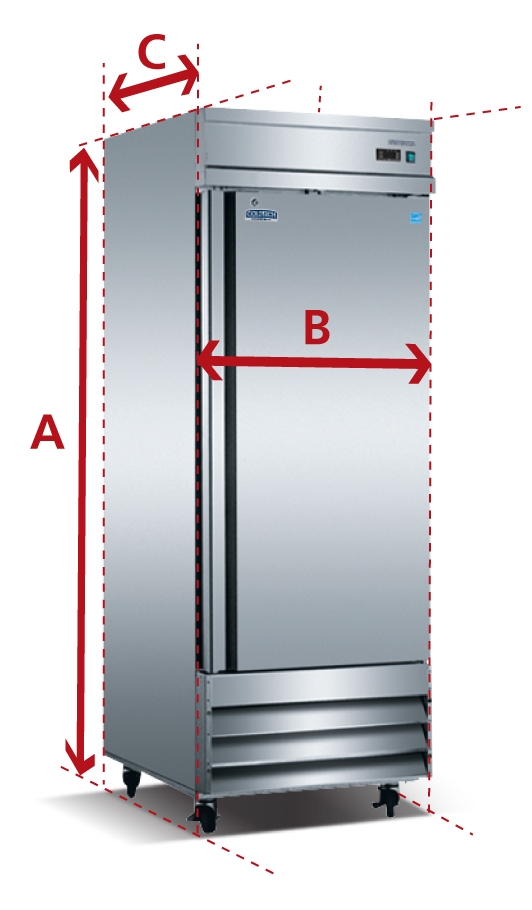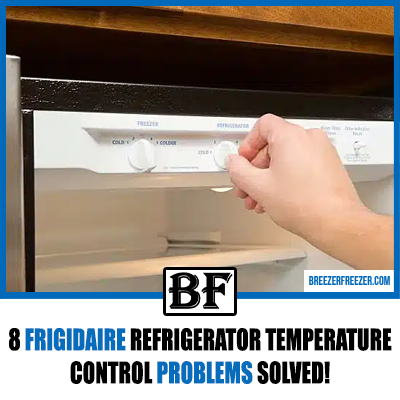10 Reasons Samsung Refrigerator Not Cooling But Freezer Is Fine!
Samsung, a well-known appliance manufacturer, acknowledges that it is not uncommon for a refrigerator to stop cooling.

Surprisingly, there are instances when you can resolve the issue without the need for technical support, even if your Samsung refrigerator is not cooling but the freezer is working fine.
There are various potential reasons for a Samsung refrigerator failing to cool while still freezing. These include a defective door gasket, higher internal temperature, excessive food inside, icy evaporator coils, or a dirty condenser coil. Additionally, a malfunctioning evaporator fan motor, damper control, defrost system, thermistor, or temperature control board can also be the cause.
It is crucial not to overlook these possibilities, as it is highly likely that one of them is the reason your Samsung refrigerator is not maintaining a cool temperature. To simplify the troubleshooting process, I will rank these causes based on their likelihood and ease of fixing.
The primary focus will be on diagnosing and rectifying the problem. Regardless of whether you own a top freezer, bottom freezer, or any other Samsung model, these do-it-yourself troubleshooting steps should assist you in attempting to resolve the issue before seeking professional assistance.
Now, let’s delve into the troubleshooting process.
Quick Fixes
| Probable Cause | Suggested Solutions |
| 1. Damaged Door Gasket | Clean the gasket if it’s dirty, defrost it if it’s frosty, or replace it if it’s torn, broken, loose, or worn out |
| 2. High Temperature | Adjust your refrigerator’s temperature to between 1-7°C |
| 3. Overfilled with Food | Decrease the amount of food in your fridge, but avoid understocking |
| 4. Frozen Evaporator Coils | Defrost the evaporator coils using a blow dryer and replace the faulty defrost heater or sensor if necessary |
| 5. Dirty Condenser Coils | Use a condenser cleaning brush to remove the dirt |
| 6. Malfunctioning Evaporator Fan Motor | If the fan blade doesn’t turn, replace the evaporator fan motor |
| 7. Damaged Damper Control | Replace the damper control unit if it’s stuck or damaged |
| 8. Defective Defrost System | Replace the faulty defrost sensor/timer, thermostat, or control board |
| 9. Faulty Thermistor | Test the thermistor for continuity and replace it if it’s defective |
| 10. Malfunctioning Temperature Control Board | As a last resort, replace the temperature control board |
What Causes a Samsung Refrigerator to Stop Cooling While the Freezer Remains Cold?
If you’re experiencing a situation where your Samsung refrigerator’s freezer is maintaining a cold temperature but the refrigerator compartment is not cooling properly, there are several potential reasons to consider. Let’s explore these possibilities in the order of their likelihood and ease of fixing:
Faulty Refrigerator Door Gasket
A faulty door gasket can prevent the refrigerator door from closing properly, leading to cold air leakage and warm air entering the unit. This can result in a lack of cooling. Check if the door gasket is torn, broken, loose, dirty, frosty, or weathered. If any of these issues are present, consider replacing the door gasket. Cleaning a dirty gasket or using a blow dryer to remove frost can also help.
Incorrect Refrigerator Temperature Setting
The refrigerator temperature setting may be set too high, causing the refrigerator to malfunction. Check the fridge setting to ensure it is within the acceptable range of 1-7°C (34-45°F). Adjust the temperature using the temperature buttons on the unit or the “Fridge Manager” Samsung widget if you have a Family Hub model.
Overstuffing the Refrigerator
Overloading the refrigerator with excessive food can obstruct airflow and prevent proper cooling. Avoid tightly packing containers and ensure there is enough space for cold air to circulate. Reduce the food load if necessary.
Iced-Over Evaporator Coils
If the defrost heater fails to turn on, the evaporator coils can accumulate ice, leading to restricted airflow and inadequate cooling. Inspect the evaporator coils for excessive ice buildup. Test the defrost heater and defrost sensor using a multimeter. If either component does not show continuity, it may need to be replaced. Use a blow dryer to defrost the coils.
Dirty Condenser Coils
Dirt accumulation on the condenser coils can impede heat dissipation, resulting in poor cooling performance. Turn off and unplug the refrigerator, then remove the rear panel covering the condenser coils. Use a condenser coil brush to remove excess dirt before restarting the fridge.
Malfunctioning Evaporator Fan Motor
If the evaporator fan motor fails to run, it cannot circulate cold air, leading to inadequate cooling. Test the fan motor by manually trying to turn the fan blade while the unit is unplugged. If it doesn’t turn, the motor may need to be replaced.
Defective Damper Control
A faulty damper control, responsible for regulating cold airflow in and out of the fridge, can result in a warmer refrigerator. Inspect the damper control and free it if it’s stuck. Replace it if it’s damaged.
Failing Defrost System
A malfunctioning defrost system can cause ice buildup on the evaporator coils, hindering cooling. Check the defrost sensor/timer, defrost thermostat, and defrost control board for faults. Replace any defective components accordingly.
Malfunctioning Thermistor
The thermistor monitors the temperature throughout the refrigerator and communicates with the control board to regulate cooling components. If the thermistor is faulty, the cooling process may be disrupted. Test the thermistor’s continuity and replace it if necessary.
Defective Temperature Control Board
If the temperature control board is faulty, it can prevent the evaporator fan motors, condenser fan motor, and compressor from receiving proper voltage, resulting in a lack of cooling. Consider replacing the control board, but consult a Samsung technician for guidance.
Frequently Asked Questions
How can I fix my refrigerator if the freezer is fine but the fridge is not cooling?
If your refrigerator is not cooling properly while the freezer is working fine, there are a few steps you can take. Check for potential icing on the evaporator coils, dirt accumulation on the condenser coils, or if the fridge temperature is set too high (above 70°C). In the case of icing, defrost the evaporator coils. Clean the condenser coils if they are dirty or adjust the fridge temperature to the recommended range of 1-7°C, depending on the specific issue.
How do I reset my Samsung refrigerator if it’s not cooling?
To reset your Samsung refrigerator, you can unplug it or turn off the circuit breaker for approximately 5 minutes. After the reset, you can refer to the manual for specific instructions on how to power it back on.
What could cause a Samsung refrigerator to stop cooling?
There are several potential causes for a Samsung refrigerator to stop cooling properly. These include a faulty evaporator fan motor, overloading the fridge with excessive food, dirty condenser coils, icing over of the evaporator coils, or a defective door seal.
Closing Thoughts
When faced with a Samsung refrigerator that is not cooling while the freezer remains functional, it is recommended to check the door seal for any faults, verify the temperature settings, avoid overstuffing the fridge with food, and inspect the evaporator coils for any signs of icing.
Additionally, it is important to consider other possible issues such as dirt-caked condenser coils or problems with the evaporator fan motor, defrost system, damper control, temperature control board, or thermistor. By addressing these factors, you can increase the chances of resolving the cooling problem effectively.
![Is It Illegal to Put a Lock On Your Refrigerator? [Quick Answer!]](https://breezerfreezer.com/wp-content/uploads/2023/10/Is-It-Illegal-to-Put-a-Lock-On-Your-Refrigerator.png)




